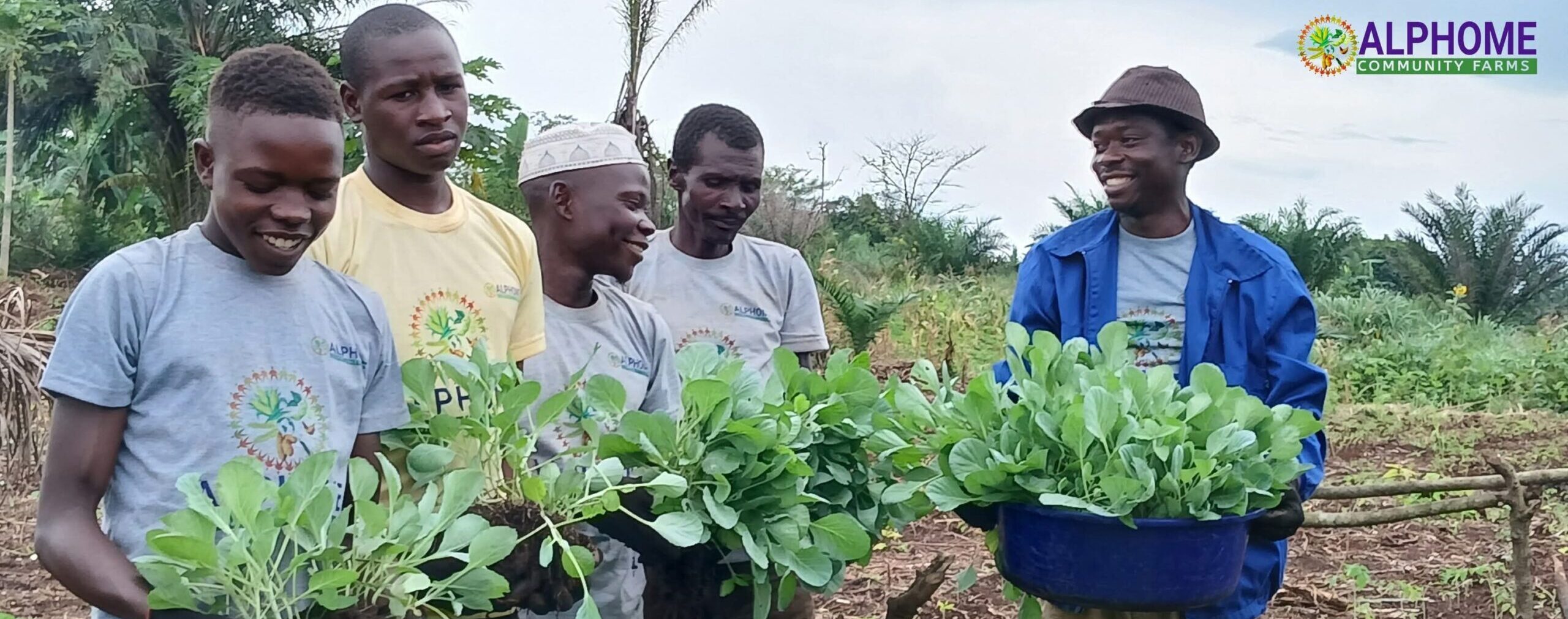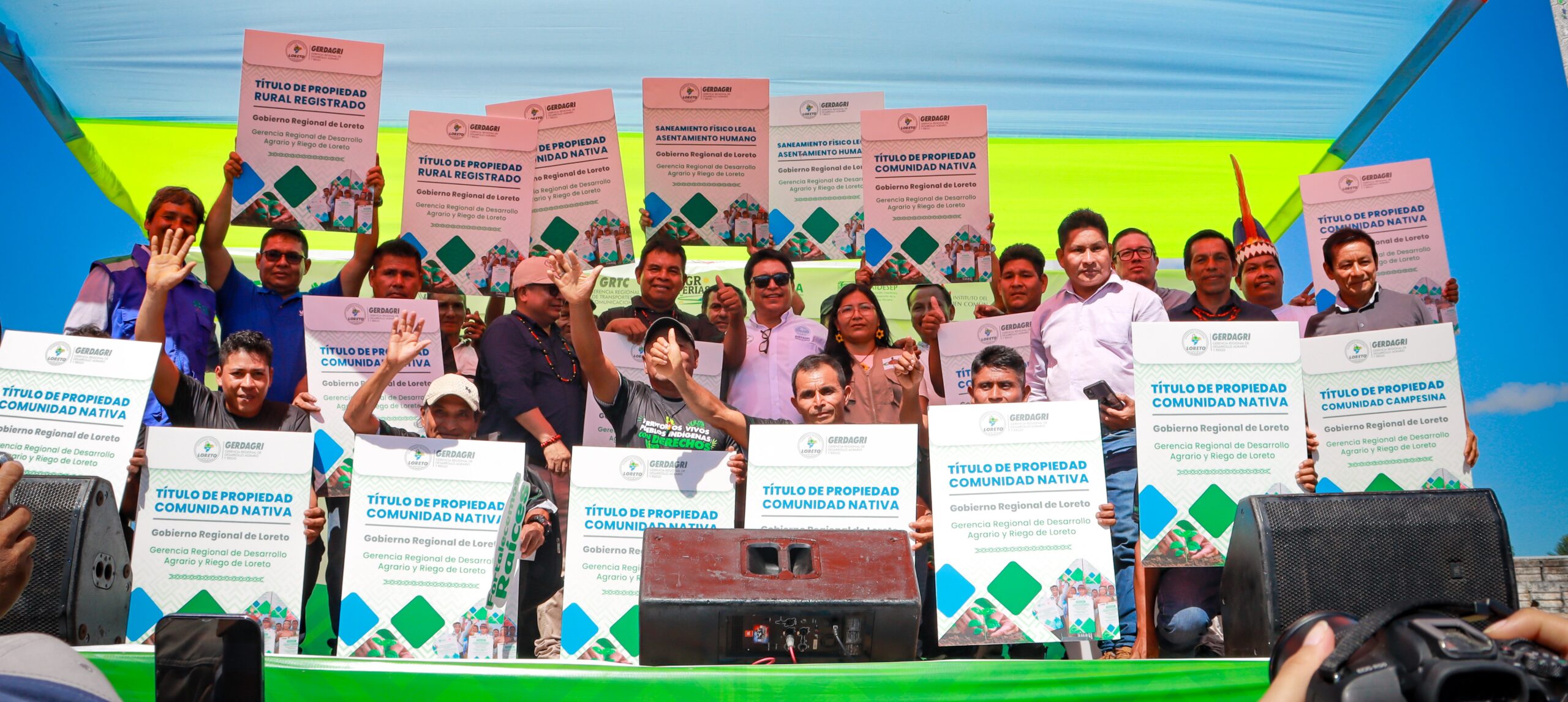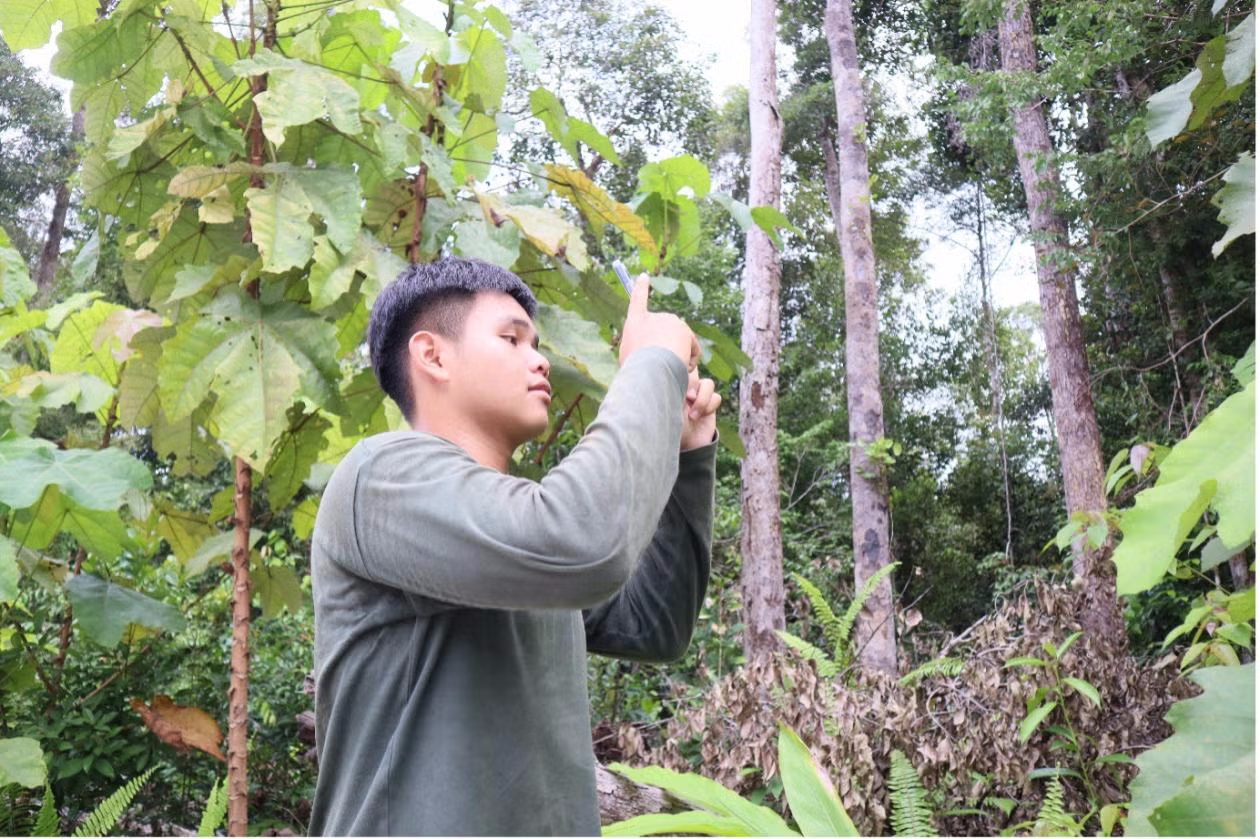Women are Leading the Way to Protect Some of the World’s Most Important Forests
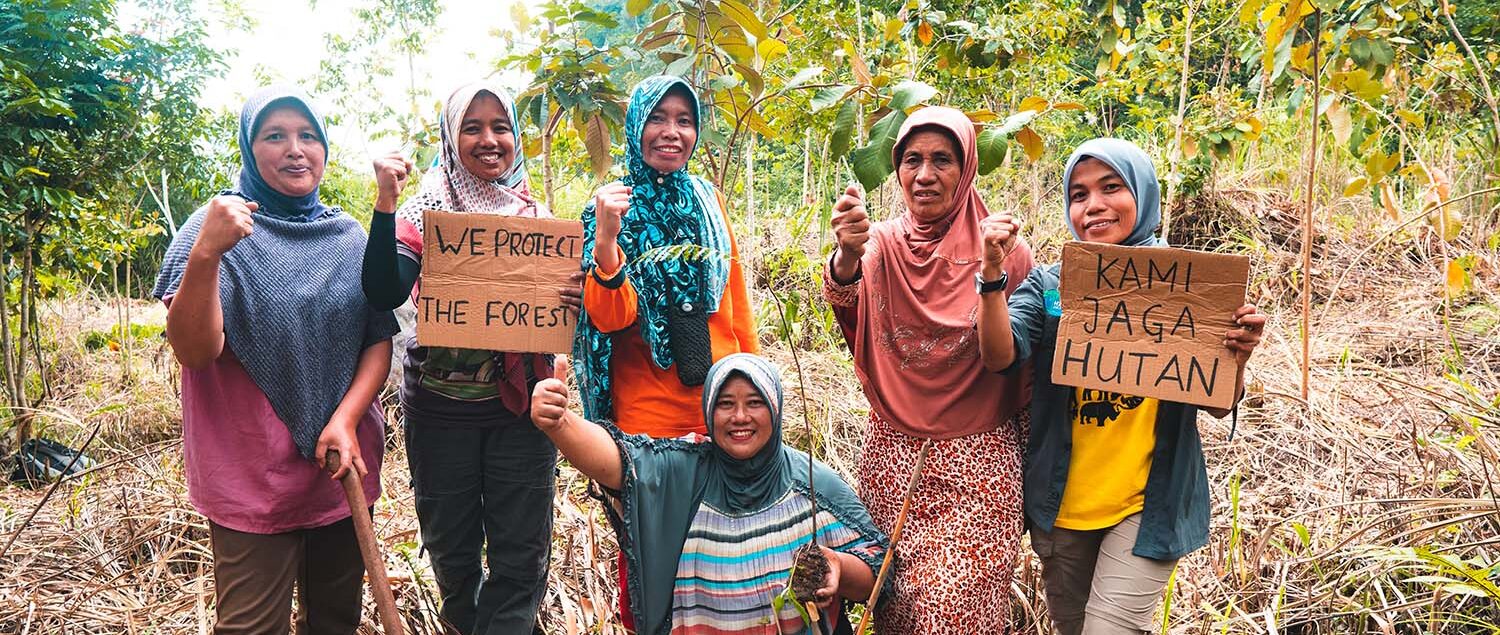
Women Rangers of Damaran Baru. Credit: HAkA
Across the world’s forests, women are not only dedicated stewards of these vital ecosystems but also trailblazers in reshaping the landscape of gender equality in environmental conservation.
While forest management and governance have historically been male dominated, research shows that women’s perspectives are equally critical to forest conservation and restoration efforts: Women often have unique knowledge of trees and forests based on their distinct roles in forest management and have applied this knowledge to protecting and monitoring forests.
However, this knowledge and the role of women in forest governance has been insufficiently recognized, and women still face barriers to participating in decision-making processes related to forest resources. Addressing gender-related challenges for forest management, such cultural norms, underrepresentation in decision making and leadership, and legal and social barriers, can both help empower women and lead to better conservation and livelihood outcomes.
Women’s capacity to govern forest resources can be improved by ensuring equal access to technologies and tools that can democratize data and facilitating women’s active engagement in the development of forest management policies and processes. As more women are emerging as leaders in this field, they are inspiring other women to lead and benefit from forest management and protection, breaking down restrictive social norms and paving the way for more inclusive and sustainable policy and action.
Last year, in recognition the United Nations’ International Women’s Day — which in 2023 focused on innovation and technology for gender equality — Global Forest Watch (GFW) held a webinar to celebrate some of the amazing women that we have had the honor to work with over the years through the Small Grants Fund and Tech Fellowship.
This blog spotlights additional stories of women leaders who have used GFW’s satellite data and tools in their work, highlighting the impact that women play in protecting some of the world’s most important forests and the impact that has on the lives of the communities who depend on them.
Rita Vilca Lucana from Amazónicos por la Amazonía (AMPA)

Rita Vilca is an Amazonian environmental engineer with a master’s in climate change and 14 years of experience. She specializes in strategic planning, sustainable territorial development, protected and conserved natural areas, ecosystem services and bioeconomy. Her love for the Amazon has led her to contribute to the establishment of more than 30 voluntary and communal conservation initiatives in Peru.
Since 2022, Rita has been the Executive Director of Amazónicos por la Amazonía (AMPA), a nonprofit organization that focuses on the conservation of biodiversity and the sustainable territorial development of the people of the Andean Amazon.
AMPA’s approach to forest monitoring considers the diverse perspectives and roles of both men and women. “Our goal is to guarantee the active participation, real visibility and representation of women and their territorial voices in solutions for climate resilience in local, national and international spaces. That is why we guide both women and men to have the same opportunities to be guardians of the forest,” said Rita.
Through voluntary and local community networks, AMPA organizes conservation work spanning 1.5 million hectares of forests in Peru. However, women have historically been underrepresented in participatory processes and decision making regarding these forests. That is why AMPA supports women’s participation in forest monitoring through trainings to reduce gender gaps, and takes into account the crucial knowledge, skills and solutions that women contribute to reducing deforestation and adapting to climate change.
“We are committed to promoting the presence of women in regional and national events related to forest monitoring and the reduction of deforestation in their territories where they have the opportunity to share their experiences and challenges in working with competent authorities,” said Rita.
Thanks to these efforts, there has been a progressive increase — 107% in 2023 as compared to 2021 and 2022 — in the number of women participants who are accredited as forest and wildlife custodians in AMPA’s participatory forest monitoring initiative.
Furthermore, AMPA’s work to empower women has led to better specific conservation and livelihood outcomes such as fostering the emergence of new women leaders who have taken on conservation challenges and responsibilities. Currently, there are more women actively participating in surveillance and control actions, tasks that were previously almost exclusively performed by men. In addition, these women leaders have assumed spaces of representation and participation in their communities such as being presidents of their associations, members of committees of mini production plants, and accredited forest and wildlife custodians.

AMPA is also working to improve women’s access to conservation spaces in general by identifying gaps in representation, visibility and decision making (see graphic below), and apply policies that focus on gender equity and diversity to address these gaps.
Their mission, “to preserve life to share it with everyone,” incorporates principles from Sumak Kawsay, or “good living,” an Indigenous principle promoting living in harmony with nature in order to achieve wellbeing for all, which is the basis of their Gender and Diversity Policy. This reflects the recognition and appreciation of ancestral wisdom, the establishment of reciprocal relationships with people and nature and the development of horizontal communication practices. Thus, AMPA works to create an inclusive and equitable environment, promoting greater representation of women in forest governance and initiatives.
In practice, this looks like designing and implementing conservation projects that consider the needs and perspectives of women from the beginning. AMPA promotes spaces for inclusive dialogue and decision making where women’s voices are heard and valued, such as through the “Red de Mujeres Amazonía que Late” (Amazonian Women’s Network) where they promote specific meetings and training that strengthen women’s capacities and leadership, allowing them not only to participate, but to significantly influence the management of their territories.


Young women are also playing more of a role in forest monitoring in their communities. Guardianas y Guardianes del bosque (Women and Men Guardians of the forest), a group that promotes the participation of youth and women, came together during an AMPA technology workshop aimed toward strengthening capacity among local communities in using tools and equipment like GPS, drones, data on GFW and Forest Watcher to monitor deforestation.
Access to these technologies and skills, combined with the development of videos AMPA created to showcase their forest monitoring efforts, provides women in the community who are protecting the Amazon with a platform for their voices to be heard.

“In many cases, the dominant narrative on climate change adaptation does not assess gender indicators and, if it does, presents women as victims rather than agents capable of contributing to solutions,” said Rita. “This is why, in all the spaces in which we work, we recognize intersectional gaps and opt for strategies that consciously and actively reduce them.”
Learn more about AMPA: Visit their website and follow them on Facebook and Instagram. You can also visit their virtual school featuring courses on conservation and sustainable management of the Amazon.
Rubama from HAkA

On the other side of the world in the rich Leuser Ecosystem that spans the provinces of Aceh and North Sumatra in Indonesia, the Forest, Nature and Environment Aceh Foundation (HAkA) has been documenting the state of Aceh’s forests since 2016. They have also been instrumental in transferring these technical skills to others, and have trained more than 1,600 individuals from government, NGOs, students, police, journalists and local communities on GFW and other tools for forest monitoring.
Rubama is Community Empowerment Manager for HAkA and has been working alongside her colleagues to strengthen women environmental defenders. “I joined HAkA in 2018 to increase its impact in engaging women’s groups in Aceh with environmental action. The activities ranged from paralegal trainings to supporting the establishment of the first women-led forest management group in Damaran Baru through the Village Forest Scheme,” said Rubama.
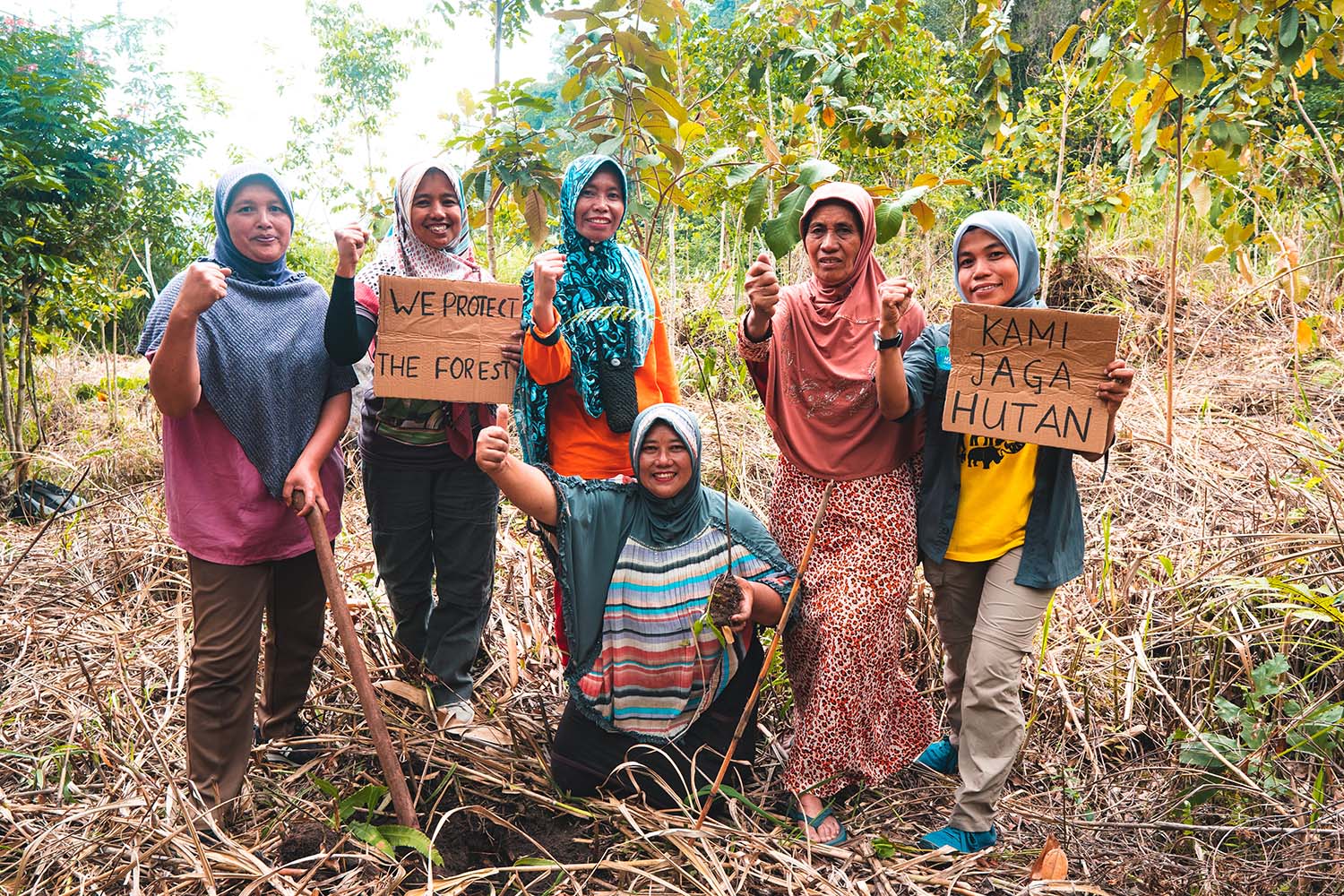
With Rubama’s leadership, HAkA funded a first-of-its-kind women’s ranger initiative in the village of Damaran Baru, and HAkA’s paralegal trainings supported 250 women paralegals across 15 cities and districts in Aceh. Rubama also helped establish PPSDA (Group of Women defenders of Natural Resources) in 2021, a network for women forest defenders across Aceh to share success stories, challenges and motivate each other.
Prior to joining HAkA, Rubama was involved with Solidaritas Perempuan (Women Solidarity), where she focused on mobilizing efforts for women to advocate for their rights.
“Community empowerment is one of our strategies to strengthen grassroots movements, especially for women and youth,” said Rubama.
Patriarchal culture is deeply rooted in Aceh, where environmental protection has traditionally been considered men’s work. However, the women-led initiative in Damaran Baru was eventually welcomed, and Rubama and her team applied the learnings to conservation efforts in other districts, including strengthening advocacy movements against mining, developing green economy alternatives and strengthening fisher women’s groups to protect peatlands. They have also engaged female religious leaders, who usually have a strong following among women, to include environmental conservation values into their teachings.

These recent efforts have amplified the voices of women — which have often been overlooked — to be heard and included in developing conservation solutions.
One of the biggest lessons from this work is that it is a slow and patient process. Increasing the presence of women’s voices can be challenging; Rubama recalled a case where their efforts to implement women-led social forestry in one village was not received well by the elders of the community. However, there are success stories, such as in Damaran Baru, that continue to drive momentum.
“We are excited to see change, albeit slowly, that more and more women’s voices are heard on issues such as forest protection and conservation,” said Rubama. “We aim to ensure that the movement can be sustained rather than aiming for a ‘quick win.’ Regular engagement with the wider community, not just the women’s group, is essential towards sustaining the movement.”

Learn more about HAkA: Follow them on Facebook, Instagram and Twitter/X.
Geneviève Ndjiki Wéladji from Action for Sustainable Development (ASD)

Geneviève Ndjiki Wéladji, President and coordinator of the Cameroonian nonprofit association Action for Sustainable Development (ASD), was interested in nature from a young age and pursued higher education in forestry sciences and the environment. As one of the founders of ASD, she is proud of their work to provide people with techniques on how to improve their living conditions while preserving natural resources. Gender is considered across all of ASD’s activities, but this doesn’t come without challenges.
“In forest areas, the woman is an essential link in the survival of households,” said Geneviève. “It is the woman who fetches firewood and does the cooking, it is also them who walks at least a four-kilometer round trip to wash the clothes at the village river, it is them who takes care of the education of the children, etc.”
A major challenge is that women are often overlooked in design or implementation of conservation projects in the country. “Women are often marginalized because of prejudice or face preconceived notions such as their inability to bear the walk and crossing the swamps,” accounted Geneviève from an experience in a forest field visit. “But [men] were all surprised when the women braved this situation without worry!”

Women depend on forests in these communities in a variety of ways: forests are their food source and their pharmacy, and they are able to generate income from non-wood forest products such as seeds used to make oil and medicine. “If the forest were to disappear, rural women would be even more vulnerable. This is why they must be involved in forest management,” said Geneviève.
This is why in 2023, when ASD received a GFW Small Grants Fund, as part of their project they ensured that women were included in trainings to use GFW tools for monitoring forests.

The project focused on responding to an increasing threat of human activity around the Mengamé gorilla sanctuary in Cameroon, including poaching, illegal logging and deforestation. ASD worked to build the capacity of the park agents, local civil society organizations and local communities to use GFW tools to monitor illegal activities and deforestation within and surrounding the sanctuary and communicate the data to decision makers, conservationists and the public. The women ASD trained were vital to collecting this data and identifying threats.
“It should be noted that women are more victims of human-wildlife conflicts in forest areas. But it was thanks to a young women intern [who] made it possible to collect the data on the drivers of deforestation in the villages bordering the sanctuary,” said Geneviève. In one mission to investigate deforestation alerts, it was the women on the team who raised awareness among the owners of agricultural plots that their plots were illegally located in the sanctuary, using local language to help avoid potential conflict.
As is the case for conservation projects across Cameroon, ASD faces challenges ensuring women are involved. However, women have an increasingly important role to play, and increasing their access to skills, as well as data and tools like GFW, can help more women get involved in forest protection. According to Geneviève, “in rural areas, the women who have been trained are mentors for their peers in the village, and we believe that the forest cover will be less destroyed.”

Learn more about ASD: Visit their website and follow them on Facebook, Twitter/X and LinkedIn.
We hope you enjoyed getting to know these women and the powerful impact their work is making to protect some of the world’s most important forests. To learn more about women using GFW, watch our webinar celebrating women changemakers in forest monitoring.
We also invite you to share your story or let us know if there is a woman in forest monitoring and conservation who inspires you — please contact us at gfw@wri.org.
